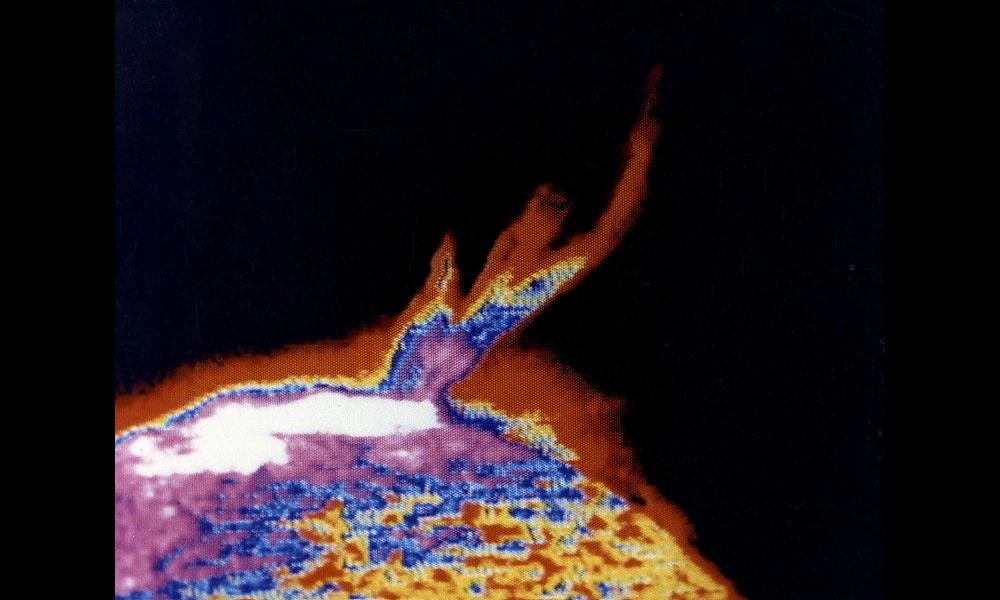ALMA Telescope’s New Insights Into the Sun’s Magnetic Fields
Published on Thu Mar 21 2024 Skylab Observes a Solar Flare | NASA on The Commons on Flickr
Skylab Observes a Solar Flare | NASA on The Commons on FlickrIn an new development in the field of solar polarimetry, researchers have now harnessed the power of the Atacama Large Millimeter/submillimeter Array (ALMA) to make breakthrough observations of the Sun in polarized light at a wavelength of 3mm. This innovative study, detailed in a recent paper, showcases for the first time how ALMA’s capabilities can be tuned for solar polarimetric observations, paving the way for unprecedented insights into the chromosphere's magnetic fields.
ALMA's new capabilities
Typically, observing the Sun, our closest star, presents unique challenges due to its intense brightness and dynamic nature. However, the ALMA telescope, with its high-resolution capabilities, has now been carefully adapted to observe the Sun in detail without harm. This marks a significant leap from previous observations, primarily confined to total intensity or "Stokes I" measurements, thus only scratching the surface of understanding solar phenomena.
Polarization measurements, particularly in "Stokes V," which indicates circular polarization, are critical as they provide direct clues on the chromosphere's magnetic fields. These fields play a vital role in solar phenomena such as flares and coronal mass ejections, which can have profound effects on space weather impacting Earth. Magnetic fields in the chromosphere, however, have remained elusive due to the challenges in measuring circular polarization at millimeter wavelengths, a gap ALMA's new observation mode now fills.
Observations
Between 2019-2022, a dedicated effort was made to enable ALMA for such sophisticated observations. This culminated in successful test observations of a magnetized source on the Sun – a following sunspot in a solar active region, revealing a significant Stokes V signature. This is in line with theoretical predictions and aligns with our understanding of how the Sun's magnetic fields influence the emission of circularly polarized light.
Furthermore, an important aspect of these observations is the meticulous calibration and correction of data to account for instrumental polarization and beam squint effects, ensuring the reliability of the measurements obtained. This demonstrates a robust framework for solar polarimetry developed by the researchers, addressing previously insurmountable challenges.
Impact
For the broader scientific community and the lay public alike, these findings underscore the immense potential of solar polarimetry to reveal the intricacies of solar magnetic fields. Looking ahead, this could revolutionize our understanding of solar physics, offering new avenues to predict and mitigate the impact of solar activity on Earth’s technological infrastructure.
Yet, as with all pioneering efforts, the journey has just begun. The limitations and complexities inherent in these observations – such as the effects of beam squint and the requirement for extensive observation times for polarization calibration – serve as reminders of the challenges ahead. Nevertheless, armed with ALMA's new capabilities, researchers are now better equipped than ever to unveil the Sun's secrets, promising exciting advancements in our quest to understand our star’s influence on the solar system.



